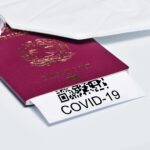Navigating the intricacies of Canadian immigration law can often feel like deciphering a complex code. For many foreign nationals planning a trip to Canada, the terms Temporary Resident Visa (TRV) and Temporary Resident Permit (TRP) frequently cause confusion. While they both sound similar and relate to temporary entry, they serve fundamentally different purposes and are governed by distinct sections of Canada’s immigration framework. Understanding the crucial difference between a TRV vs TRP is not just an academic exercise; it is essential for ensuring a smooth and successful entry into the country. This guide provides a definitive breakdown of each document, clarifying their purpose, who they are for, and the critical factors that determine which one an individual might need.
The Foundation of Temporary Entry: A Deep Dive into the Temporary Resident Visa (TRV)
A Temporary Resident Visa (TRV), often referred to as a visitor visa or entry visa, is the standard document required for citizens of many countries to enter Canada for a temporary purpose, such as tourism, visiting family, or short-term business meetings. The TRV is essentially a pre-screening mechanism. It serves as official confirmation from a Canadian visa office abroad that an individual has been assessed and meets the basic requirements for entry as a temporary resident under the Immigration and Refugee Protection Act (IRPA) and its Regulations (IRPR). The core premise of a TRV is that the applicant is admissible to Canada. The application process is designed to verify this admissibility before the person travels.
Not everyone needs a TRV. Citizens of visa-exempt countries, such as the United States, Australia, and many European nations, can travel to Canada without one. However, most of these individuals will still need an Electronic Travel Authorization (eTA) if arriving by air. The TRV requirement is specific to nationals of designated visa-required countries. To be eligible for a TRV, applicants must satisfy an immigration officer that they will respect the temporary nature of their stay. This involves demonstrating several key factors, including strong ties to their home country (such as a job, family, or property), sufficient financial resources to cover their stay, and a clear intention to leave Canada at the end of their authorized period. The purpose of the visit must be genuine, and the applicant must not pose any health or security risk to Canada. It is crucial to remember that holding a valid TRV does not provide an absolute guarantee of entry. The final decision always rests with a Canada Border Services Agency (CBSA) officer at the port of entry, who will conduct a final assessment of admissibility.
Overcoming Barriers: The Critical Role of the Temporary Resident Permit (TRP)
In stark contrast to a TRV, a Temporary Resident Permit (TRP) is a special document designed for individuals who are otherwise inadmissible to Canada. Inadmissibility can arise from a wide range of grounds outlined in IRPA, including criminality (such as a DUI conviction), serious criminality, medical issues, financial reasons, misrepresentation, or security concerns. When a person is deemed inadmissible, they are legally barred from entering Canada. The TRP provides a discretionary remedy to this prohibition. It allows an individual to enter or remain in Canada for a specific, temporary period when there are compelling reasons to do so. The issuance of a TRP is not a right but a privilege granted on a case-by-case basis when an officer determines that the individual’s need to enter Canada outweighs any potential risks to Canadian society.
The central question in any TRP application is whether the applicant’s purpose for coming to Canada is justified. This requires a careful balancing act. For instance, an individual with a past criminal conviction might be granted a TRP to attend a close family member’s wedding, provide testimony in court, or attend a critical business conference that has significant economic benefits for Canada. The applicant must provide a persuasive and well-documented submission that details the reasons for inadmissibility, explains why their entry is essential, and demonstrates that they do not pose a significant threat. A TRP is granted for a specific duration, which can range from a single day to a maximum of three years, depending on the circumstances. It is a temporary solution and does not erase the underlying inadmissibility. For long-term solutions, an individual might need to pursue other avenues like Criminal Rehabilitation or a Record Suspension.
TRV vs. TRP Canada: A Side-by-Side Comparison for Absolute Clarity
To fully grasp the TRV vs TRP Canada distinction, a direct comparison is incredibly helpful. While both relate to temporary entry, their functions are mutually exclusive. A person is either admissible and may require a TRV (if from a visa-required country), or they are inadmissible and must seek a TRP to enter. It is impossible to be eligible for both at the same time for the same entry, although in some cases, an inadmissible person from a visa-required country might apply for a TRV and receive a TRP in its place if the officer is satisfied that the entry is justified.
The application focus for each is also fundamentally different. A TRV application is built around proving eligibility and the temporary nature of the visit. The applicant’s goal is to show they meet all standard requirements. In contrast, a TRP application begins with the acknowledgment of a failure to meet these requirements (i.e., inadmissibility). The entire focus shifts to providing a compelling justification for why an exception should be made. This requires a more nuanced and persuasive argument, often supported by extensive documentation such as personal statements, letters of support, and evidence of rehabilitation. The legal basis also differs: TRVs are issued under the standard provisions of the Immigration and Refugee Protection Regulations, whereas TRPs are a special exemption granted under section 24(1) of the Immigration and Refugee Protection Act itself.
- Purpose: A TRV is a document for admissible individuals to prove they meet the requirements for temporary entry. A TRP is for inadmissible individuals to temporarily overcome their inadmissibility for a justified reason. Applicant Profile: TRV applicants are foreign nationals from visa-required countries who are considered admissible to Canada. TRP applicants are foreign nationals (from any country, visa-required or not) who are inadmissible on grounds such as criminality, health, or misrepresentation. Legal Authority: A TRV is issued based on meeting the established criteria in the IRPR. A TRP is a discretionary measure granted under section A24 of IRPA when an officer believes the entry is justified. Application Focus: The goal of a TRV application is to demonstrate compliance and intent to leave Canada. The goal of a TRP application is to present a compelling argument that the need for entry outweighs the risks associated with the inadmissibility.
The Application Gauntlet: Securing Your TRV or TRP
The process for obtaining a TRV is relatively standardized. Most applicants can apply online through the Immigration, Refugees and Citizenship Canada (IRCC) portal. This involves completing the necessary forms, such as the IMM 5257 (Application for Visitor Visa), uploading supporting documents, paying the processing fees, and providing biometrics (fingerprints and a photograph) at a designated Visa Application Centre (VAC). Key supporting documents typically include a valid passport, proof of financial support, a detailed travel itinerary, a letter of invitation if applicable, and evidence of ties to one’s home country. Processing times can vary significantly depending on the applicant’s country of residence and the volume of applications at that specific visa office.
Securing a TRP, however, is often a more complex and demanding process. Applications can be submitted to a Canadian consulate or visa office abroad, or in certain situations, an individual may apply directly at a Canadian port of entry (POE). Applying at a POE is generally riskier, as a refusal results in immediate denial of entry. A TRP application must be exceptionally thorough. The cornerstone of the application is a detailed submission letter that clearly articulates the reason for the inadmissibility, provides a compelling justification for the need to enter Canada, and explains what measures have been taken to mitigate any risk. This must be supported by strong, credible evidence. For example, in a case of criminal inadmissibility, this might include court records, proof of sentence completion, and letters from parole officers or employers attesting to the applicant’s good character and rehabilitation. Due to the high level of discretion involved, the quality and persuasiveness of the application package are paramount to success.
Frequently Asked Questions
What is the primary difference between a TRV and a TRP?
The primary difference is the applicant’s admissibility status. A Temporary Resident Visa (TRV) is for individuals who are admissible to Canada and meet the standard requirements for a temporary stay. A Temporary Resident Permit (TRP) is a special document for individuals who are inadmissible to Canada but have a justified, compelling reason to enter temporarily.
Can someone need both a TRV and a TRP?
Yes. If a person is from a visa-required country and is also inadmissible, they technically require both authorization to enter (a visa) and permission to overcome their inadmissibility (a permit). In practice, an individual in this situation would apply for a TRV, and if the officer finds their reason for entry compelling, they may issue a TRP in place of the visa sticker in their passport.
How long is a Temporary Resident Permit (TRP) valid for?
The validity of a TRP is determined by an immigration officer and depends entirely on the circumstances of the case. It can be issued for the specific duration of the visit, such as for a one-week conference, or for a longer period up to a maximum of three years. The length is tied to the justification provided for entering Canada.
Does having a Temporary Resident Visa (TRV) guarantee entry into Canada?
No, a TRV does not guarantee entry. It indicates that a Canadian visa office has pre-screened the individual and found them to meet the requirements for entry. However, the final decision is always made by a Canada Border Services Agency (CBSA) officer at the port of entry, who will conduct their own assessment.
Who determines if an individual is inadmissible to Canada?
Inadmissibility is determined by an immigration officer based on the grounds set out in Canada’s Immigration and Refugee Protection Act (IRPA). This assessment can happen when applying for a visa or permit, or upon seeking entry at a Canadian port of entry. The reasons can range from past criminal convictions and medical conditions to security concerns.
Talk to us to find out more. ->
The content above is not intended to provide legal advice or opinions of any kind and may not be used for professional or commercial purposes.







